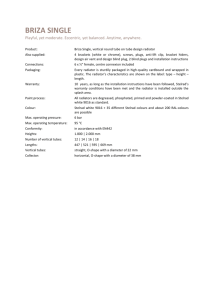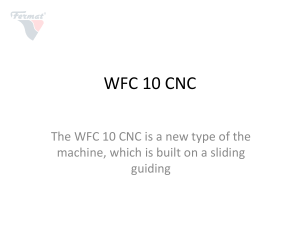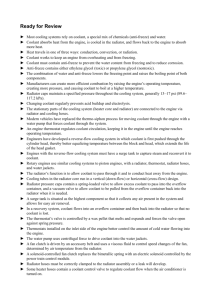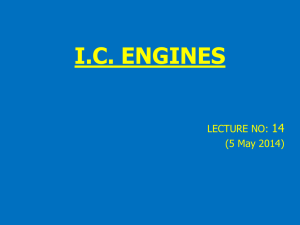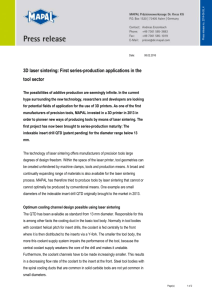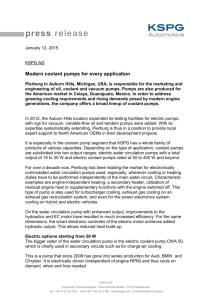PART 4 - COOLING SYSTEM revised
advertisement
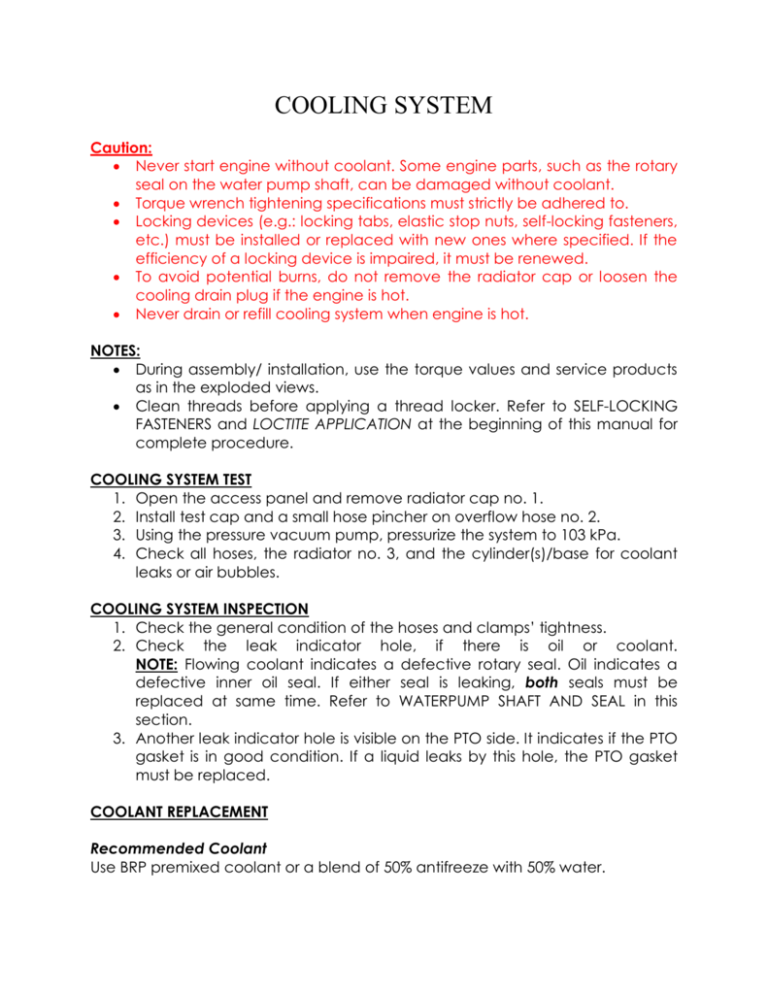
COOLING SYSTEM Caution: Never start engine without coolant. Some engine parts, such as the rotary seal on the water pump shaft, can be damaged without coolant. Torque wrench tightening specifications must strictly be adhered to. Locking devices (e.g.: locking tabs, elastic stop nuts, self-locking fasteners, etc.) must be installed or replaced with new ones where specified. If the efficiency of a locking device is impaired, it must be renewed. To avoid potential burns, do not remove the radiator cap or loosen the cooling drain plug if the engine is hot. Never drain or refill cooling system when engine is hot. NOTES: During assembly/ installation, use the torque values and service products as in the exploded views. Clean threads before applying a thread locker. Refer to SELF-LOCKING FASTENERS and LOCTITE APPLICATION at the beginning of this manual for complete procedure. COOLING SYSTEM TEST 1. Open the access panel and remove radiator cap no. 1. 2. Install test cap and a small hose pincher on overflow hose no. 2. 3. Using the pressure vacuum pump, pressurize the system to 103 kPa. 4. Check all hoses, the radiator no. 3, and the cylinder(s)/base for coolant leaks or air bubbles. COOLING SYSTEM INSPECTION 1. Check the general condition of the hoses and clamps’ tightness. 2. Check the leak indicator hole, if there is oil or coolant. NOTE: Flowing coolant indicates a defective rotary seal. Oil indicates a defective inner oil seal. If either seal is leaking, both seals must be replaced at same time. Refer to WATERPUMP SHAFT AND SEAL in this section. 3. Another leak indicator hole is visible on the PTO side. It indicates if the PTO gasket is in good condition. If a liquid leaks by this hole, the PTO gasket must be replaced. COOLANT REPLACEMENT Recommended Coolant Use BRP premixed coolant or a blend of 50% antifreeze with 50% water. To prevent antifreeze deterioration, always use the same brand. Never mix brands unless the cooling system has been completely flushed and refilled. CAUTION: To prevent rust formation or freezing condition, always replenish the system with the BRP premixed coolant or with 50% antifreeze and 50% water. Do not use tap water, straight antifreeze, or straight water in the system. Tap water contains minerals and impurities which build up in the system. During cold weather, straight water causes the system to freeze, while straight antifreeze thickens and does not have the same efficiency. Always use ethylene glycol antifreeze which containing corrosion inhibitors specifically recommended for aluminum engines. Draining the System 1. Remove radiator cap no. 1. 2. Partially unscrew the cooling drain plug located below the water pump housing. 3. When the cooling system is drained completely, remove the cooling drain plug completely and install a new gasket ring. Screw the cooling drain plug and torque it to 10 N/m. Refilling the System 1. Remove the RH side panel. 2. Pinch the radiator inlet hose no. 4 between the radiator and thermostat housing with a large hose pincher. 3. Unscrew the bleeding screws on top of the thermostat housing. NOTE: Both cylinders must be bled. 4. With the vehicle on a flat surface, refill the radiator no. 3. When the coolant comes out by the thermostat housing hole, install the bleeding screw with its gasket ring and torque to 5 N/m. 5. Remove hose pincher, fill up radiator, and install the radiator cap. 6. Refill coolant tank no. 5 up to the cold level mark. Install coolant tank cap. Run the engine until the thermostat opens then stop engine. 7. When the engine has completely cooled down, recheck the coolant level in the radiator and coolant tank, and top up if necessary. The level in the coolant tank should be between the MIN and MAX marks. NOTE: Each year or every 100 hours, or when vehicle reaches 3000 km, check the coolant concentration (freezing point) with proper tester. THERMOSTAT The thermostat is a single action type located on top of cylinder head, on intake side (front cylinder). Thermostat Removal 1. Install a hose pincher on both of the radiator hoses. 2. Remove: The thermostat housing screws and pull the thermostat cover The thermostat with the gasket out of the hole. THERMOSTAT INSPECTION 1. To check thermostat, put it in water and heat the water. 2. The thermostat should open when the water temperature reaches 65 °C. 3. Check if the gasket is brittle, hard or damaged. If so, replace the gasket. Thermostat Installation For installation, reverse the removal steps, paying close attention to the following details: Install the thermostat cover, and then torque the screws to 6 N/m. Check the coolant level in the radiator and coolant tank and top off if necessary. CAUTION: Do not forget to bleed the cooling system. Refer to COOLANT REPLACEMENT. RADIATOR CAP Using a pressure cap tester, check the efficiency of radiator cap no. 1. If the efficiency is feeble, install a new 110 kPa cap. Do not exceed this pressure. RADIATOR Radiator Inspection 1. Check the radiating fins for clogging or damage. 2. Remove insects, mud or other obstructions with compressed air or low pressure water. Radiator Removal 1. Drain cooling system. 2. Remove the front fascia and radiator shroud. (Refer to BODY.) 3. Remove: radiator inlet no . 4 and radiator outlet no. 6 hoses overflow hose no. 2 mounting bolts no. 7 unplug radiator fan no. 8 remove radiator no. 3 Radiator Installation For installation, reverse the removal steps. Pay close attention to the following details: Install rubber bushings no. 10 between the bottom of radiator and the radiator supports. Fill up the radiator. Refer to COOLANT REPLACEMENT. Check for any coolant leakage from the radiator and hoses. COOLANT TANK The coolant expands as the temperature and pressure rise in the system. If the limiting system working pressure cap is reached 110kPa, the pressure relief valve in the pressure cap is lifted from its seat and allows coolant to flow through the overflow hose into the overflow coolant tank no. 5. COOLANT TANK REMOVAL 1. Remove: LH inner fender (refer to BODY) Coolant tank support bolt no. 11 Overflow hose no. 2 Support no. 12 and coolant tank no. 5. 2. Empty coolant tank. Coolant Tank Installation To install, reverse the steps of removal. COOLANT TEMPERATURE SENSOR (CTS) Refer to ENGINE MANAGEMENT for testing and replacement procedures of the coolant temperature sensor (CTS). RADIATOR FAN Radiator Fan Test NOTE: The ECM controls the radiator fan via the input of the coolant temperature sensor (CTS). The radiator fan should turn on when coolant temperature reaches 98℃ and should turn off when the coolant cools down at 95℃.
